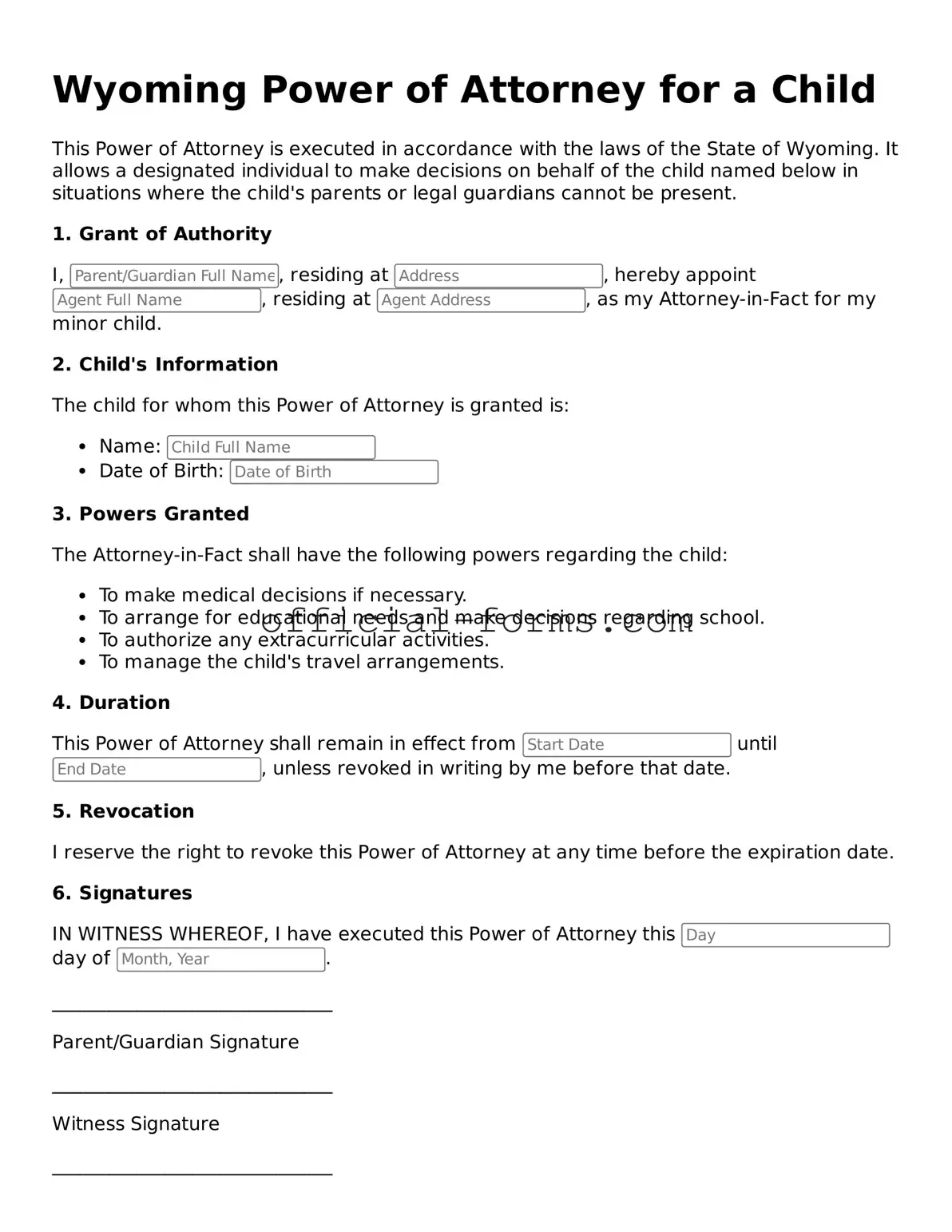Official Wyoming Power of Attorney for a Child Document
The Wyoming Power of Attorney for a Child form is a legal document that allows a parent or legal guardian to appoint another individual to make decisions on behalf of their child. This arrangement can be crucial in situations where the parent is unable to care for the child temporarily. Understanding the importance of this form can help ensure that your child's needs are met even in your absence.
Open My Power of Attorney for a Child Now
